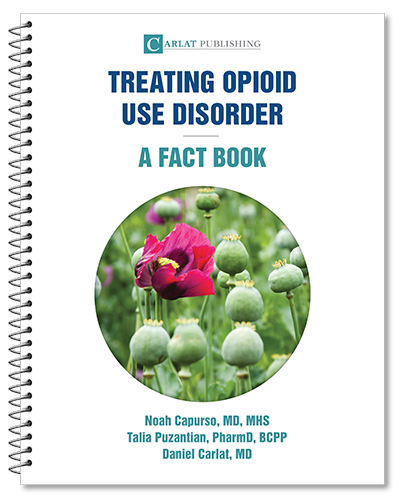Home » A Kratom Update
A Kratom Update
January 1, 2017
From The Carlat Addiction Treatment Report
Joshua Sonkiss, MD
Editor-in-chief, The Carlat Addiction Treatment Report
If you have not yet heard of kratom (usually pronounced kray-tom or krah-tom), consider this an introduction to an herbal supplement that will likely be popping up in your newsfeeds with increasing frequency. Kratom (Mitragyna speciosa) is a tropical evergreen tree in the coffee family that has been used for centuries in Southeast Asia to boost energy and relieve pain. Kratom preparations are gaining popularity among substance users because of the plant’s opioid-like and stimulant properties. As with other opioids, regular use can cause physical dependence as well as withdrawal symptoms similar to opioid withdrawal.
Because of concerns about kratom’s addictive potential, the DEA had proposed classifying it as a Schedule I drug, in the same category as heroin. There was an outcry of protest, however, with many people advocating for its value as an opioid substitute both for pain treatment and to help opioid users curb their addictions. In a highly unusual move, the DEA postponed its decision, and as of now kratom is still legally sold (http://tinyurl.com/zttt6by). Since the DEA ban has been placed on the back burner, Florida and New York are considering bans at the state level.
Your patients are likely to obtain kratom either online or directly from “head shops.” It comes in a variety of forms, including leaves, powders, and capsules, with a typical dose costing in the range of $5–$10. On drug user forums such as Erowid, people report a subjective effect of initial stimulation, and later euphoria, with a duration of action around 2 to 4 hours. The main side effects appear to be sedation and nausea. At high doses, people report severe nausea, vomiting, and dizziness. Animal studies suggest there may be less respiratory depression with kratom than other opioids, but this has not been studied in humans. There have been deaths reported in users of kratom, though most were using it in conjunction with other substances. It’s worth noting that some prescribers have begun using buprenorphine to treat kratom use disorder. Although kratom won’t show up in routine drug tests, urine testing is available for mitragynine, one of kratom’s main psychoactive compounds.
Bottom line: Kratom is a plant with mild opioid-like properties that may well become addictive for some users. Overall, it appears to be less addictive than other opioids, whether prescription painkillers or street drugs. There’s a good chance, however, that it will soon become illegal, at least in some states.
Addiction TreatmentBecause of concerns about kratom’s addictive potential, the DEA had proposed classifying it as a Schedule I drug, in the same category as heroin. There was an outcry of protest, however, with many people advocating for its value as an opioid substitute both for pain treatment and to help opioid users curb their addictions. In a highly unusual move, the DEA postponed its decision, and as of now kratom is still legally sold (http://tinyurl.com/zttt6by). Since the DEA ban has been placed on the back burner, Florida and New York are considering bans at the state level.
Your patients are likely to obtain kratom either online or directly from “head shops.” It comes in a variety of forms, including leaves, powders, and capsules, with a typical dose costing in the range of $5–$10. On drug user forums such as Erowid, people report a subjective effect of initial stimulation, and later euphoria, with a duration of action around 2 to 4 hours. The main side effects appear to be sedation and nausea. At high doses, people report severe nausea, vomiting, and dizziness. Animal studies suggest there may be less respiratory depression with kratom than other opioids, but this has not been studied in humans. There have been deaths reported in users of kratom, though most were using it in conjunction with other substances. It’s worth noting that some prescribers have begun using buprenorphine to treat kratom use disorder. Although kratom won’t show up in routine drug tests, urine testing is available for mitragynine, one of kratom’s main psychoactive compounds.
Bottom line: Kratom is a plant with mild opioid-like properties that may well become addictive for some users. Overall, it appears to be less addictive than other opioids, whether prescription painkillers or street drugs. There’s a good chance, however, that it will soon become illegal, at least in some states.
Issue Date: January 1, 2017
Recommended
Newsletters
Please see our Terms and Conditions, Privacy Policy, Subscription Agreement, Use of Cookies, and Hardware/Software Requirements to view our website.
© 2025 Carlat Publishing, LLC and Affiliates, All Rights Reserved.


_-The-Breakthrough-Antipsychotic-That-Could-Change-Everything.jpg?1729528747)



